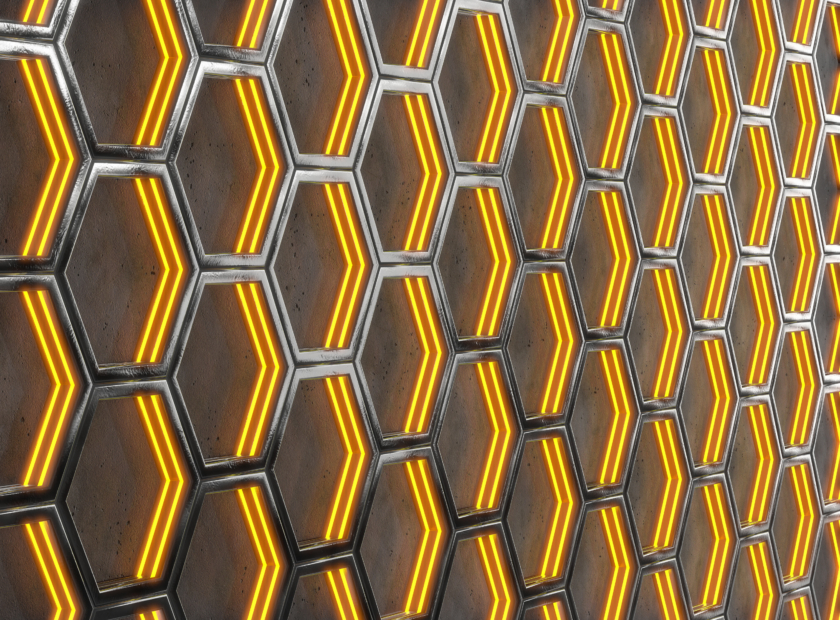Graphene Facts
The attention of innovators around the world is being drawn to graphene.
Can this simple, lightweight, potentially economical, and renewable material change the world? We believe so. And after you learn a few things about graphene, we think you’ll agree.
Basics
The graphene is composed of a single layer of carbon atoms that are bonded together with sp2 bonds in a hexagonal lattice pattern. Graphite is formed by stacking multiple layers of graphene. Graphene is incredibly thin, measuring only one atom thick (0.345Nm), making it the thinnest known compound. It is actually a 2-dimensional material. Prior to the isolation of graphene, it was believed that two-dimensional compounds could not exist because they would be too unstable. However, graphene’s carbon-to-carbon bonds are small, strong, and completely stable. Despite being mostly transparent, even a single atom-thick layer of graphene can be seen with the naked eye.
History
Graphene was studied theoretically for many years before it was first isolated in 2004 by physicists Andre Geim, Konstantin Novoselov, and other collaborators at the University of Manchester in the UK. Their original inquiry was: Can we create a transistor from graphite? While conducting their research, Geim and Novoselov extracted thin layers of graphite from a graphite crystal using Scotch tape, transferred these layers to a silicon substrate, and then attached electrodes to create a transistor. These researchers were awarded the Nobel Prize in Physics in 2010. Since this discovery, research on graphene around the world has skyrocketed.
Properties
Graphene is an extraordinary material in every aspect.
The thinnest. It is the thinnest material we can see, measuring just one atom thick.
The lightest. To give an idea, a square meter of ordinary paper weighs 1000 times more than graphene, while a single graphene leaf large enough to cover a football field would weigh less than a gram.
More resistant. With a tensile strength of 150,000,000 psi, graphene is stronger than both steel and Kevlar.
More elastic. Graphene has the exceptional ability to maintain its initial size after being subjected to tension. Graphene leaves suspended on silicon dioxide cavities show spring constants ranging from 1-5 N/m and a Young’s modulus of 0.5 TPa.
Best conductor of heat. At room temperature, graphene has a thermal conductivity of (4.84±0.44) × 10^3 at (5.30±0.48) × 10^3 W•m−1•K−1.
Best conductor of electricity. In graphene, each carbon atom is connected to three other carbon atoms in a two-dimensional plane, which leaves one electron free for electron conduction.
Recent studies have demonstrated a mobility of electrons at values higher than 15,000 cm2•V−1•s−1. Graphene moves electrons 10 times faster than silicon, using less energy.
Graphene is exceptional in every aspect
It is the thinnest material we can see, barely an atom thick. One square meter of graphene weighs approximately 0.77 milligrams, making it 1,000 times lighter than ordinary paper. Furthermore, it has an exceptional ability to maintain its initial size after being subjected to tension and is the best conductor of heat and electricity.Moreover, graphene can absorb 2.3% of white light despite its extreme thinness. This property makes it possible to achieve full-band mode locking when optical intensity reaches saturation fluence. Graphene is also a renewable material that is ecologically friendly, thanks to the abundance of carbon in the universe.
What makes graphene even more exceptional
is that all these astonishing qualities exist in one simple material. Graphene is the only material in the world that is the thinnest, strongest, lightest, stretchiest, and has super-fast heat and electricity conductivity.
While there are challenges to overcome, graphene has the potential to change the world in numerous ways. Initially, it will improve the performance of existing applications, but its potential goes beyond that. It will work in conjunction with other emerging 2-D compounds to revolutionize the way we interact with the world.
Graphene has the potential to change the world with its exceptional properties.
Its applications are vast and varied, and it has the potential to improve existing technologies while also opening up new possibilities. Here are some potential applications of graphene:
Electronics:
Graphene is an excellent conductor of electricity and can be used to make electronic devices faster and smaller. It can also replace ITO in touch screens, light panels, and solar cells. Graphene’s flexibility makes it possible to create foldable televisions and windows that are also projectors.
Biological Engineering:
Graphene’s properties make it ideal for creating bioelectric sensory devices for monitoring glucose and hemoglobin levels, cholesterol, and DNA sequencing. Lightweight, flexible graphene-infused “rubber bands” can remotely monitor vulnerable patients such as premature babies. Graphene oxide can revolutionize drug delivery, allowing for the safe and precise delivery of cancer treatments and anti-inflammatory drugs.
Filtration:
Graphene is impervious to liquids and gases but allows water to pass through it. Its strength and fine pores make it useful in water filtration systems, desalination systems, and biofuel manufacturing.
Mixed Materials:
Graphene can be used to produce anything that needs to be strong and light, such as airplanes, body armor, and military vehicles. Its electrical conductivity can also open up new possibilities. Graphene can be used to make the body of an aircraft that resists lightning damage and communicates electronically any problems with the structure to the pilots. Materials such as concrete can also be developed to take advantage of graphene’s many exceptional properties.
Batteries:
Graphene-enhanced batteries can store energy more efficiently and last longer than traditional lithium-ion batteries. Electric cars, laptops, and other devices can be more durable, lightweight, and efficient with graphene-enhanced batteries.
Graphene is an extraordinary material that possesses exceptional qualities that are not found in any other material. With the isolation of graphene, a whole universe of possibilities for its application is opening up. Its unique properties can remove previous limitations and make the impossible possible.



